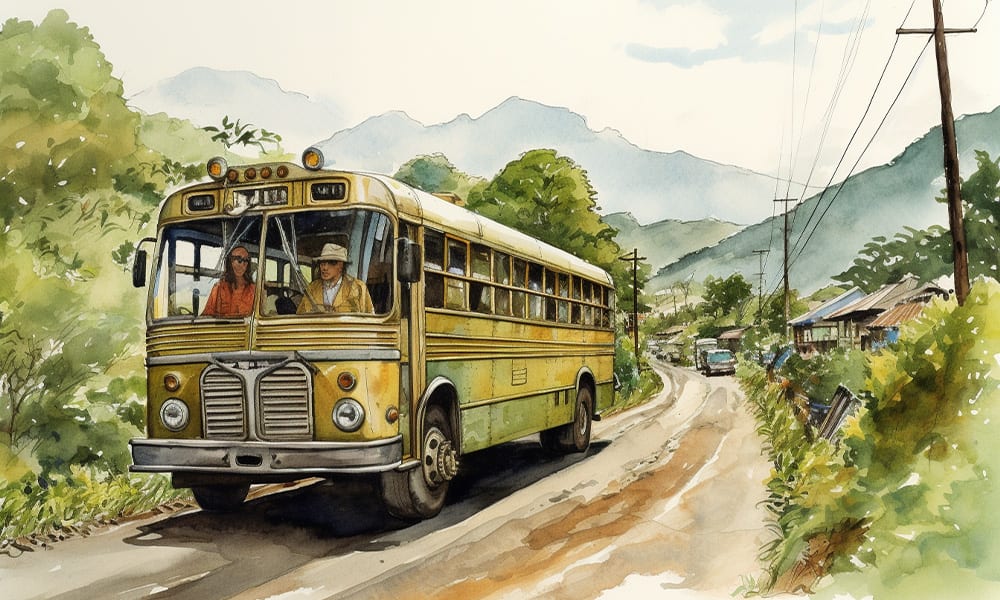Is there any class of worker in Costa Rica more underappreciated, more taken for granted than the bus driver? Tens of thousands of people are transported daily by drivers representing over 300 different companies.
Think of the number of routes there are– San Jose to all points in the country, then the regional lines that travel the coasts, and points between popular tourist spots, and then, to me the most grinding routes of all–the interurbanos that connect neighborhoods within towns and cities from border to border and coast to coast.
Now think of the condition of many of the streets, roads and highways, the potholes and narrow shouldered two-laners used by every 18-wheeler and multi-ton dump trucks. Think of all the other drivers out there, at all skill levels, from competent to ‘..They must have paid someone off to get a driver’s license’.
And consider the fact that the thousands of buses in use in Costa Rica, have no central authority to speak of, and no regulations governing them. With all of that in mind, it is amazing how seldom you hear or read of a major accident involving a bus. Recently, I was in Manuel Antonio with a friend visiting from the US. We were standing on the sidewalk across from the central beach. This area is congestion central, with cars, taxis, delivery trucks, and buses all sharing the same narrow streets.
A massive tourist coach bus made its way toward the tight intersection, coming from the direction of the park. The look on my friend’s face said–No Way! No way that bus squeezes between the parked cars and navigates that tight turn without either a sideswipe, or a pause while somebody moves their car. My friend was wrong. I had seen this done countless times before and had no doubt the driver would measure it perfectly and be on his way without problem–and he did so successfully.
The route I have ridden more than any other goes between San Jose and San Isidro de el General. Coming from San Jose it climbs 6,500 feet, topping out at the 10,000-foot Cerro del Muerte (Mountain of Death), then drops 7,500 treacherous feet over 30 wildly curving miles, before pulling into San Isidro. Going the opposite direction begins with a long 7,500 foot climb before the steady descent into San Jose.
The road is all a narrow two-lane, except for the final stretch from Cartago to San Jose. The patience and skill needed to pilot a 10 ton bus full of passengers over this type of highway is off the charts. There are ten trips daily each way, and in the long history of this particular bus line, I recall only two accidents, neither catastrophic. Formidable! Of course, nobody gets rich driving a bus.
The average salary for a bus driver here is a little over 700,000 colons per month (about $1,300). This is before taxes and caja deductions, and also includes housing, transport and other benefits. The average work week is 55-60 hours and for drivers on longer routes there will be nights spent away from home. Veteran drivers–those with at least 20 years experience can make a bit over 1 million colons per month. But roughly 4 in 5 drivers make only between 350 and 600 thousand colons per month.
The hours and stress involved makes for continual turnover, so that less than 5% of bus drivers make it to the 20 year mark and the top payment plateau. So the next time you find yourself using a bus, whether it’s to go to the capital or just into town or to the beach, show your driver a little love and respect.
A “Muchas gracias” when departing the bus is a great way of saying “Job well done” to those hard-working drivers who so many of us rely on.






